How to tape up plastic sheeting so it doesn't remove paint
Laur
6 years ago
Featured Answer
Sort by:Oldest
Comments (12)
dyliane
6 years agoRelated Discussions
Plastic sheeting over basement dirt floor to combat moisture?
Comments (12)The intended purpose for laying down plastic is to retard the transmission of soil vapor (which is in almost all soils except in extremely arid areas, and inexorably rising due to changes in barometric pressure) from coming up into the basement space. The fact that you are using a dehu means that you have a perceptible soil vapor problem (at least that's why you are paying the electric co. to run the dehus, which is comparable to running an A/C, in some cases). Note however, that I said retard, not completely prevent the rising of soil vapor into the basement atmosphere. Nothing I know of will completely keep it out. Because we now have a goal of sealing up our houses in the name of energy savings (and have modern, and different, whole-house heating systems) rising soil vapor can get stuck within the building potentially causing damage to the structure or contents or residents, if mold develops. Of course your house, like mine, was built with long-tested systems that did not expect, or require, the house to be as hermetically sealed as we sometimes try for these days. In 1857 the vapor was a-rising just as it is today, but it was exiting the building much more easily. Two other factors: people lived and worked at home and were more likely to be aware of and able to adjust the basement openings during the day, promoting additional passive ventilation to remove the moisture. And they may have highly prized that very same moisture if they stored food in the basement. Of course they also didn't have nifty stuff like cross-linked plastic molecules made into cheap (if you don't take into account any off-stream environmental costs), easily laid-out rolls of plastic to put to use, either. Soil vapor is also coming from the basement's walls as your inspector noted. But blocking that moisture is as hard as, or harder, than blocking the soil vapor. If you had thoughts of converting your basement to modern uses (family room, media room, exercise parlor, etc.) you may be disappointed as this is rarely successful in old houses such as ours. So the remaining issue seems to be: how tight is the house above the basement, and how might that tightness be interfering with the house's natural ventilatory patterns. (I think of it as how the house is "breathing", albeit in a passive way.) And of course, it also depends how much more you may be planning to do, in the name of energy conservation, to further tighten up the house. You have run smack into one of the central dilemmas of old-house care: how do you integrate (without doing damage) modern building and energy standards with a structure that was designed and built to support a completely different system? Solving one problem can easily create a new, perhaps more difficult to manage, unforseen issue. There are many opinions and oxen-to-be-gored in this arena. As a practical matter, if you want to lay down plastic (though I recommend special-purpose materials intended for vapor retardation instead of construction poly) and can seal it well with tape where sheets are overlapped, and along the bottom of the walls, you can susbstantially reduce the amount of rising vapor within the basement cavity. But you should know there are some who posit that doing so will shift this moisture (perhaps with damaging consequences) to adjacent soil spaces, including under and in the immediate, exterior vicinity of your foundation walls. This (according to some) may super-saturate the soil, disturbing the necessary firmness and creating settling or susidence problems. Does it? I surely don't know, but it does create - over time - a very moist soil under the plastic. (You can test this by laying a yard-square scrap of plastic on the dirt floor and see what happens.) Others recommend various systems of forced, or air-pressure augmented passive ventilation to remove the moisture laden air from the basement before it can rise into house interior and replace it with (theoretically) drier exterior air. This method has the advantage of not monkeying around with existing soil mositure states, but it is complicated, and may take personal attention to adjust during each day and/or electricity to run. If you have just purchased this house, I think you should observe the ebb and flow for a while (at least a calendar year), as you think about this. And keep the issue in mind as you contemplate any further sealing and insulation projects. It sounds as though the dehus are keeping things in check, so nothing (except cost of power and fuss of removing condensate) is lost by taking a go-slow approach. And by all means, test for radon if you have it in your area. (Your local or state health department is a resource on this.) An upside of the necessary ventilation to control radon can be a reduction of basement moisture since the gas and at least some of the air vapor are removed at the same time....See MoreHow to remove blue tape
Comments (4)You could try heating up the tape, but if is pulling off the paint underneath it, then that really could mean that the paint underneath it is not adhered well. This is really one of the reasons why we don't tape walls....you never know how well that paint is stuck because you never know what it was painted with initially. Heating up the tape could minimize the damage, but it is likely that you are going to have to patch the damage and repaint....or you could try touching up if they left you some extra paint....See MoreBack with a question about how to remove the frog tape
Comments (3)Oh, that would be everywhere, where the paint overlaps the tape. I was painting from 2 am to 4 am on Sat, Sun, and Tues nights. Ugggh! Thank you so much for telling me exactly what I have to do. I don't care if it takes a long time to remove the tape carefully, I want to protect my work!!! Painted rugs, hmmmmm. Right now they are in my fantasy brain. I don't dare share this with DH as we have so much on our plate already with finishing off the huge renovation job and moving by Sept 1. Then there is regular work and chasing children. So the painted rug is tabled, so to speak, until a rainy day....See MoreMake holes in plastic sheet for new plants???
Comments (34)Why is this even in the landscape design forum? I'm sure the OP won't listen but add another vote against landscape fabric and rocks. The fabric will eventually break down and create a perfect environment for weeds. The rocks will eventually get clogged with dirt and silt and look ugly. It may be 3 years or 5 years but someone will eventually cuss you as they remove the mess....See MoreUser
6 years agodyliane
6 years agoJudy Mishkin
6 years agoUser
6 years agoUser
6 years agoLaur
6 years agolast modified: 6 years agohatetoshop
6 years agodyliane
6 years agotatts
6 years ago
Related Stories

BATHROOM OF THE WEEKWhite Paint and Patterned Tile Freshen Up a 5-by-11-Foot Bathroom
A designer uses a light palette and hardworking cabinetry to update a couple’s 1970s hallway bathroom
Full Story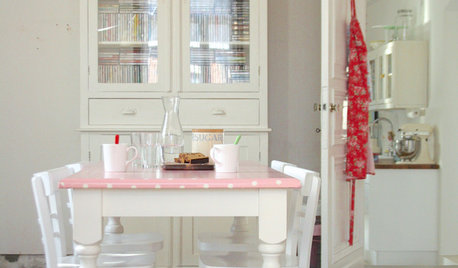
DECORATING GUIDESWake Up Tired Furniture With Paint, Paper and Fabric
Give ordinary pieces a new spin with crafty updates, like a fresh tabletop, decorated sideboard and wall-size pinboard
Full Story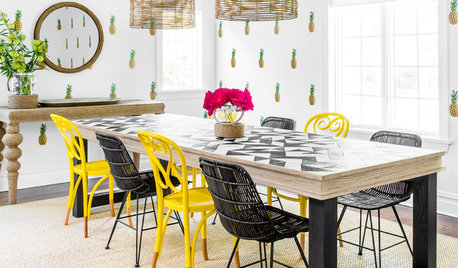
DECORATING GUIDESSpruce Up Your Rental, No Nails or Paint Required
Refresh your walls and protect your security deposit with 8 damage-free options
Full Story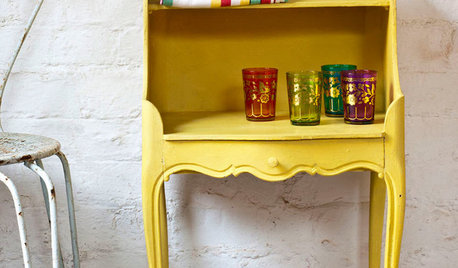
PAINTINGWhat to Know About Milk Paint and Chalk Paint — and How to Use Them
Learn the pros, cons, cost and more for these two easy-to-use paints that are great for giving furniture a vintage look
Full Story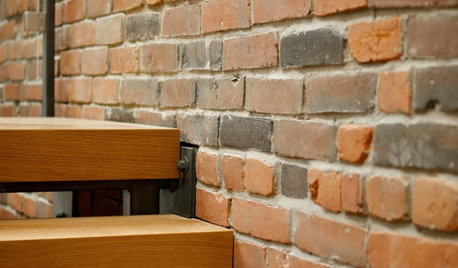
BRICKGreat Materials: Common Brick Stacks Up Style
So basic and yet so incredibly versatile, bricks can dress home exteriors, walls, roofs and more. Here's how to bring out their best
Full Story
MOST POPULARSo You Say: 30 Design Mistakes You Should Never Make
Drop the paint can, step away from the brick and read this remodeling advice from people who’ve been there
Full Story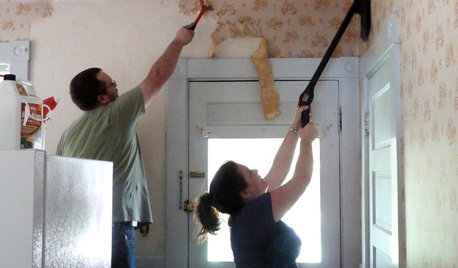
DECORATING GUIDESHow to Remove Wallpaper in 4 Steps
Learn the best way to remove wallpaper with only water (and elbow grease) so your next wall treatment will look great
Full Story
MOST POPULARHeads-Up Hues: 10 Bold Ceiling Colors
Visually raise or lower a ceiling, or just add an eyeful of interest, with paint from splashy to soothing
Full Story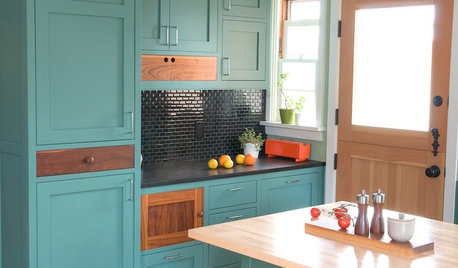
MOST POPULARFrom the Pros: How to Paint Kitchen Cabinets
Want a major new look for your kitchen or bathroom cabinets on a DIY budget? Don't pick up a paintbrush until you read this
Full Story
COLORPick-a-Paint Help: How to Quit Procrastinating on Color Choice
If you're up to your ears in paint chips but no further to pinning down a hue, our new 3-part series is for you
Full Story


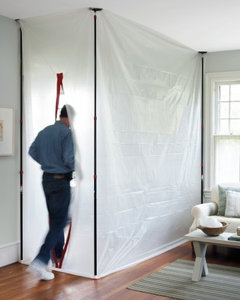



chiflipper